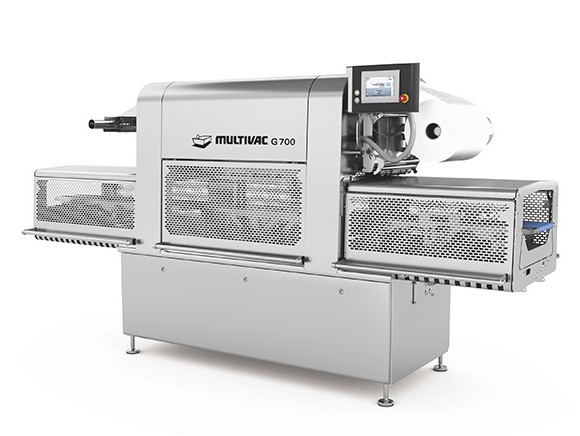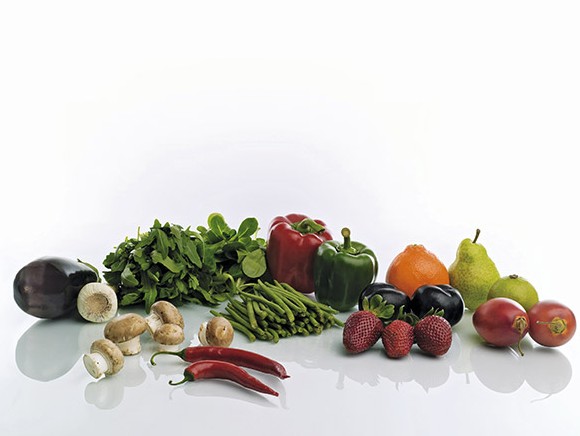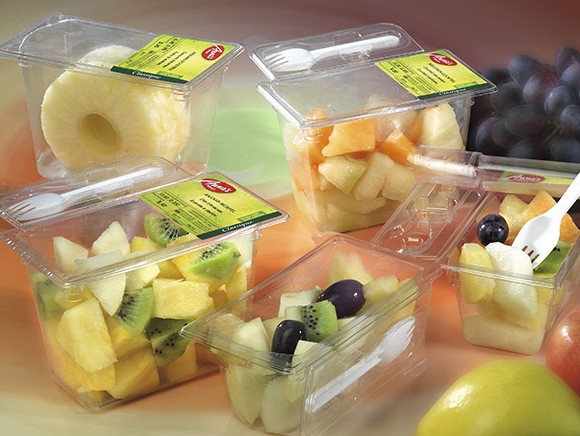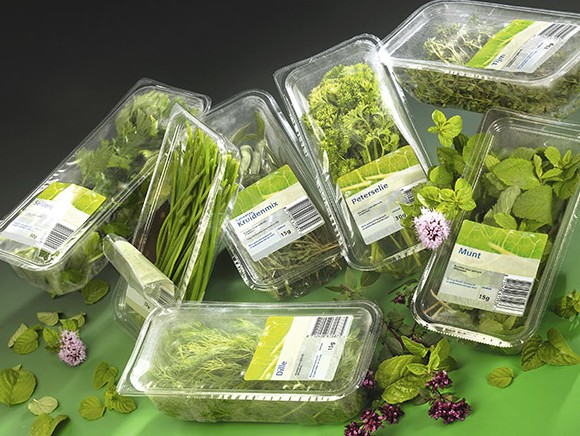
With the G 700 model, MULTIVAC is expanding its range with the addition of a high-output traysealer for packing ready meals, snacks, vegetables and fresh-cut products of all types. Thanks to the use of innovative gas flushing technology, even delicate products and those with crumbly constituents or those foods, which are hot filled, can be packed gently and reliably under modified atmosphere. The G 700 offers a high degree of flexibility when it comes to running different
tray formats as well as high output and maximum efficiency.
With its new traysealer, which will be seen for the first time at inter- pack 2017, MULTIVAC is responding to a significant trend towards more convenience. The demand in particular for ready meals, antipasti, ready-to-eat salad and fruit varieties, as well as small and healthy snacks in all price sectors, continues to grow constantly.
Depending on the product to be packed, the G 700 can produce tray packs with or without modified atmosphere. When producing packs with modified atmosphere, the G 700 uses gas purging of the trays. There is no requirement to evacuate them. This means the packaging procedure is more gentle and can even be used for delicate food products. It is therefore possible to pack crumbly products or those ready-meal compo- nents, which are hot filled, in a consistent and reliable way. The G 700 achieves cycle rates of up to 15 cycles per minute with modified atmosphere. When packing without modified atmosphere, up to 18 cycles per minute can be achieved.

In addition to plastic trays, the G 700 can also run trays made of aluminium or board, as well as multi-chamber trays and those with a wide variety of shapes, and the tray length can be up to a maximum of 110 mm. The G 700 has a precise and reliable tray transport system, ensuring the trays are transported very gently. The dies can be changed very simply and quickly. When it comes to the loading and infeed of the trays, the G 700 can be equipped with MULTIVAC belt systems or drag chain infeed systems, in which appropriate denesters can be integrated. The MULTIVAC G 700 has been equipped with an intuitive user interface for a high degree of process reliability and a high level of ergonomic operating convenience.
Die change, including heating-up, in approx. 15 minutes
MULTIVAC Hygienic Design™ for maximum and very easy cleansing
Capable of complete wash-down (protection class IP65)
Compact, inline traysealer, which is designed as single-track
Energy-efficient servo drive
Output: sealing only: up tot 18 cycles per minute. Gas flushing: up to 15 cycles per minute
Reliable and ergonomic operation of recipe change, film change and die change thanks to description and depiction in the HMI
IP control with HMI 2.0 graphic user interface

The G 700 is designed for the packaging of convenience products in MAP packs, such as ready meals or their components, snacks, fruit, vegetables and salads. MULTIVAC's tray packaging solutions fulfil the highest requirements when it comes to shelf life, pack security and product presentation.
The technically simplest solution is sealing of the trays without modified atmosphere. These packs protect the product from contact and mechanical influences but do not have any properties which extend shelflife.
The permeability of the upper web is matched to the respiration rate of the product by means of microperforation. This enabled an equilibrium atmosphere to be established, extending the shelf life of delicate, respiring products such as fruit, vegetables, salads and herbs.
In the case of packs with modified atmosphere, the atmosphere in the pack is replaced with a gas mixture that is matched to the product in order to maintain its form, colour and freshness. Since prepared and ready-to-eat products, such as salads and hotfilled ready meals or their components, are usually very delicate, the process does without evacuaction (vacuum) and fills the packs quickly and evenly with the selected modified atmosphere before sealing takes place.

Ready-to-eat meals and other convenience foods with various degrees of pre-processing are the focus of current trends with consumers. They are generally more expensive, but offer many benefits: they can be kept for a long time, are easy to store, and above all they are quick and simple to prepare. Even professional cooks are increasingly reaching for convenient packs due to staff shortages and immense time pressure. According to conservative estimates by experts, more than 70 percent of the products used in hospitality and communal catering services are convenience products. According to a cur- rent survey by the polling institute, Forsa, around 40 percent of Germans in private households like to eat frozen pizza or a ready meal at home. Vegetarian food is also a hot topic, since around 12 percent of all the ready meals launched last year on the market belong to this category. In 2011 this figure was just 2 percent. Young people In particular, 72 percent of those surveyed in the Forsa study, as well as 63 percent of women place great value on food that is uncomplicated and quick to cook. In general only 39 percent of those surveyed now regularly cook at home, whereas in 2015 the figure was 41 percent. This development continues to advance relentlessly due to increasing mobility and changing lifestyles.
The bad image, which clung to ready meals in previous times, has long become a thing of the past. Today the meals are mod- ern, high-quality, attractively packaged and absolutely hygienic. There is particularly great potential for bio-products. According to surveys by the Nuremberg Trade Fair in conjunction with Biofach 2017, some 84 percent of owners of health food shops and small supermarkets expect to see increasing turnover in 2017. Online shopping also expects to receive a major boost, since consumers are increasingly having their food, whether bio, premium or regu- lar, ordered at the press of a button and dispatched to their home or office, because consumers have less time and have acquired a taste for the convenience of online shopping. Experts estimate that by 2030 the overwhelming percentage of purchases will be made from the sofa or office desk, or even on the move via smartphone, and our food will be delivered by service providers in protective and resource-saving packaging. The overall trend is also moving towards needs-based portion sizes – as singles and older consumers continue to want meals that fit their personal consumption requirements.
Whether pasta, Indian curry or ready meal with or without sauce, whether meaty, vegetarian or vegan - the food has to be healthy, balanced and high-quality. By dispensing with artificial aromas, taste intensifiers, preservatives and colourings, many food pro- cessing companies are reflecting the spirit of the times. For 91 percent of Germans, it is taste above all that is important. In addi- tion to this however, the packaging design also plays an important role, since attractively packaged meals, which are easy to handle and have an extended shelf life without compromising quality, are preferred at the point of sale. Another strong trend in this market is chilled food. The mar- ket volume of these pre-prepared or ready-to-eat food products, which are sold from the chill cabinet, is growing annually at a rapid pace. But so-called high-convenience products are also on the march. These are composite products, which are freshly produced as premium quality in a restaurant business and are practically indistinguishable from home-cooked food, and which in future could even be produced on an industrial scale. The indi- vidual constituent parts of the meal, for example meat or fish, side dishes and sauces, are filled as portions into film pouches, then heated separately and presented appetisingly on the plate. If one looks on the map, countries like Russia, China and India can be crystallised as the major markets for strong growth in con- venience foods and ready meals. For example, Russia is currently experiencing a significant number of new investments with large agraraian holdings. Retail chains are now beginning to process their products themselves and even marketing them under their own label.
Source: © Multivac